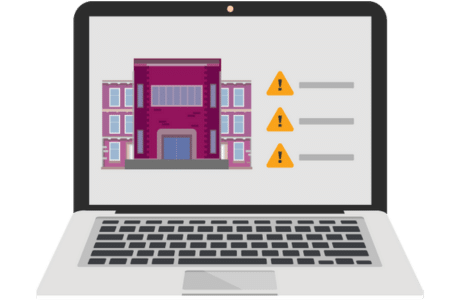Guest Author: Amy Grosso
This is the second of a two-blog series delving into a recent report from the London Peer Action Collective (PAC). The first blog addressed child-on-child abuse and violence in schools, while this blog will highlight best practices and effective information recording during the exclusion process. The PAC is a youth-led initiative through The McPin Foundation, designed to empower young people with lived experience of violence to identify what changes are needed to make their communities safer and transform these insights into meaningful action.
Types of School Exclusions
School exclusions are used to address behavioural issues or policy violations. However, their impact reaches far beyond this initial purpose, affecting students emotionally, academically and socially.
Understanding the different forms of exclusions helps to shape how schools can balance maintaining standards with providing supportive environments for learners. The report by the London PAC describes six different types of exclusion:
- Lunch Time Exclusions
Students are barred from school areas during lunch or breaks but can attend regular classes during the day. - Internal Exclusions
The student stays on school premises but is removed from classes and peers, spending time in a designated area under supervision. - Suspensions
These temporary exclusions prevent a student from attending school for a specified number of days. - Permanent Exclusions
This type of exclusion prohibits the student from returning to the school. - Managed Moves
A managed move involves transferring a student to another school. This may be a permanent measure or temporary, depending on the circumstances. - Pupil Referral Units (PRUs)
For students who can’t be placed in a mainstream school, PRUs provide alternative education tailored to their specific needs.
Each type of school exclusion carries distinct consequences, highlighting the importance of thoughtful decision-making to maintain a safe learning environment while supporting student development.
Understanding the Impact of School Exclusions
Exclusions can have a profound impact on young people, as highlighted by The PAC’s Tackling Youth Violence Research Findings. These experiences often lead to emotions such as anger, anxiety, stress and diminished self-esteem. Many students feel stigmatised or confused during the process, while some reflect on their actions with feelings of guilt. Others, however, may respond with resentment. For a few, exclusion even brings a sense of freedom. These varied emotional responses underscore the importance of handling exclusions with empathy and careful consideration.
There is also a troubling link between exclusions and youth violence, as they can increase the risk of harmful behaviours. To combat this, schools should address the root causes of harmful behaviour through holistic interventions, focusing on support rather than solely on punishment.
Listening to students is essential. By understanding their perspectives, schools can develop more effective and compassionate exclusion practices that lead to better outcomes for everyone involved.
School Responsibilities in the Student Exclusion Process
Improving the school exclusion process requires structured and fair protocols. One pivotal suggestion from The Peer Action Collective involves reassessing how schools determine punishments, ensuring consistency, transparency and fairness. At the heart of these improvements is a focus on understanding the root causes of disruptive behaviour, with the goal of fostering more constructive and positive outcomes for students.
The Department for Education published updated guidelines on suspensions and permanent exclusions in August of 2024. The guidance prioritises making exclusions a last resort while maintaining high standards of behaviour and safety. Key updates include:
- Revised Powers for Headteachers
Headteachers can now cancel an exclusion before the governing board meeting, offering flexibility to revisit decisions if needed. - Remote Meetings
Parents can now request remote meetings about exclusions, making the process more accessible. - Notification Requirements
When a pupil with a social worker or under the care of a Virtual School Head is excluded, the school must notify the relevant professionals, ensuring safeguarding measures are put in place. - Guidance on Behaviour Management Strategies
New recommendations bring a focus to managed moves and off-site directions as effective strategies, promoting behavioural improvements without resorting to instant exclusion.
These changes aim to ensure the exclusion process is both equitable and transparent, while keeping students’ best interests at the forefront.
Gathering evidence and documentation is essential to understanding the root causes of behaviour and determining whether expulsion is justified. With the support of effective technology, this process becomes more efficient, enabling schools to streamline information collection and conduct thorough risk assessments with greater accuracy.
Streamlining the Exclusion Process Through Safeguarding Technology
Technology plays an increasingly vital role in ensuring fairness, transparency and accountability in managing exclusions. CPOMS StudentSafe offers a comprehensive solution to assist schools in maintaining consistent processes when it comes to managing exclusions, safeguarding, pastoral and more. With the ability to record and monitor concerns for every student, from challenging behaviour to potential signs of abuse, the platform provides safeguarding practitioners with a holistic view of all concerns so they can be addressed appropriately.
Premium Cases and Forms adds a wide range of flexible tools within StudentSafe allowing school leaders, behaviour teams and safeguarding staff to respond promptly when an exclusion is a possibility. It helps staff to document vital evidence, such as incidents and risk assessments, ensuring decisions are well-supported and justifiable.
The Premium Cases and Forms module also tracks how students are supported before and after exclusion, aligning with schools’ responsibility to provide continued educational provision. Outcomes from these cases can also be shared with Ofsted and other inspectorates during reviews.
Transitions to alternative provisions can be tricky but CPOMS Engage simplifies them. This platform ensures that critical information about students is shared seamlessly and securely, creating strong communication between schools and alternative providers to offer the support students need.
Next Steps for Building a Fair and Supportive School Exclusion Framework
Addressing exclusions requires more than reactive measures. With a tailored and holistic approach, schools can better tackle the root causes of disruptive behaviour and provide multi-faceted support to affected students. Combining updated policy guidance, empathetic methodologies, and innovative tools like CPOMS Engage and CPOMS StudentSafe with Premium Cases and Forms, schools can build processes that are fair, transparent and centred on enabling positive outcomes.
To learn more about how CPOMS software can support your school’s expulsion process, book your free demo today.



